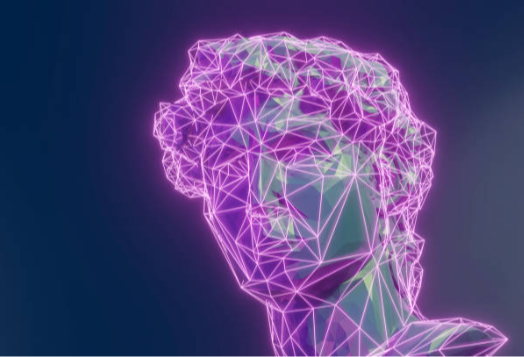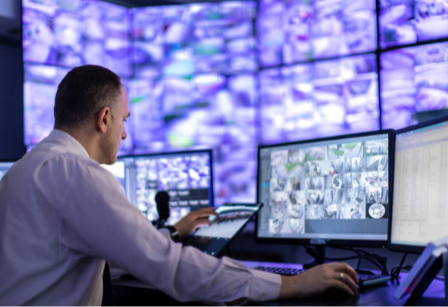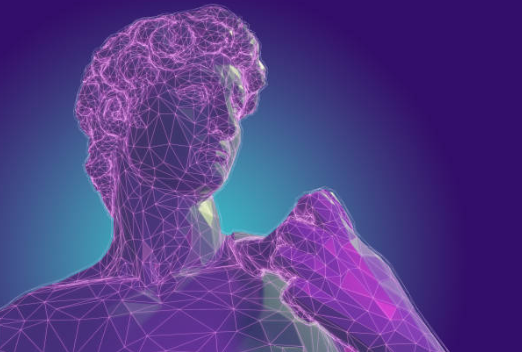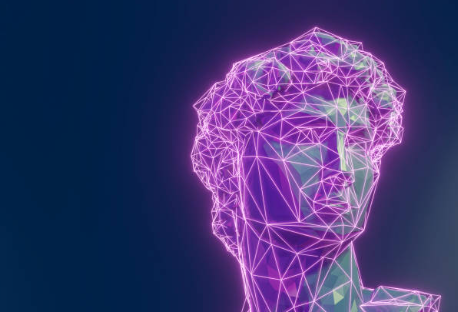
Big Brother or Big Benefits? The Impact of Face Recognition on Our Lives
Facial recognition technology has proved to be an innovation with the power to reshape our society. Still, it is a controversial tool capable of influencing our lives both positively and negatively.
On the one hand, facial recognition offers heightened security and convenience. For example, in January 2020, the New Delhi police used facial recognition technology to identify and arrest a criminal who had been evading capture for several years. The system scanned through millions of records and identified the suspect at a public event, leading to a successful arrest.
On the other hand, facial recognition poses profound questions about privacy and surveillance. In 2019, a Michigan man named Robert Williams was wrongfully arrested due to a facial recognition system misidentification. The technology matched his driver’s license photo with surveillance footage of a shoplifter. This incident raised serious concerns about the accuracy of facial recognition systems.
In this article, we will discuss the delicate balance between technological advancement and the preservation of individual freedoms. Join us as we analyze the complexities of facial recognition and its far-reaching implications.
History of Face Recognition Technology

The history of face recognition technology began in the 1960s with the work of Woodrow Wilson Bledsoe (an American mathematician, computer scientist, and prominent educator). He developed a system that could classify photos of faces using a RAND tablet (a graphical input device). Although manual and labor-intensive, Bledsoe’s work laid the groundwork for automated facial recognition.
In the 1970s, Goldstein, Harmon, and Lesk used 21 specific subjective markers such as lip thickness and hair color to automate the recognition process. In their article “Identification of Human Faces” published in May 1971, they described a mathematical model that helped “to isolate a face from a population using feature descriptions.” This was a significant step towards the development of facial recognition.
One of the significant milestones was the development of the Eigenfaces approach in the 1980s by Sirovich and Kirby, and later applied to face recognition by Matthew Turk and Alex Pentland. This method was revolutionary because it allowed for the efficient representation and comparison of faces. It utilized principal component analysis to efficiently represent faces.
The 1990s saw the creation of the first semi-automated facial recognition system, which required the operator to locate features such as the eyes, nose, and mouth on photographs. The system would then use this data to match with a database of faces.
In 2001, the Super Bowl XXXV in Tampa, Florida, used facial recognition software to search for potential criminals and terrorists among the crowd. This event marked one of the first large-scale deployments of facial recognition technology.
Another landmark was the introduction of FaceID by Apple in 2017. This technology used a 3D model of the user’s face and revolutionized the way we think about security and personal device access.
These examples illustrate the evolution of face recognition technology from a manual process to a sophisticated, integral part of modern security.
How Face Recognition Works
Face recognition technology is a form of biometric software that can identify or verify a person from a digital image or a video frame. The technology compares facial features from the image with a database of known faces to find a match. It is primarily used for security purposes but has seen increasing use in other areas.
The process of face recognition comprises multiple essential components and steps that work together to accurately identify individuals. Initially, the system captures an image or video frame of a person's face. This raw data is then preprocessed to enhance image quality and normalize lighting conditions, making it suitable for analysis.
Next, the system detects the presence of a face within the image. This is typically achieved using algorithms designed to identify facial features, such as the eyes, nose, and mouth. Once a face is detected, the system extracts key features from the facial region. These features, which include specific landmarks and measurements, are converted into a numerical representation known as a faceprint.
The extracted faceprint is then compared against a database of known faceprints to find a match. Advanced algorithms analyze the similarities and differences between the faceprint of the captured image and those stored in the database. If a match is found, the system identifies the individual; if not, the system may indicate an unknown face or prompt for further verification.
Throughout this process, various techniques, such as machine learning and artificial intelligence, are employed to improve accuracy and efficiency. These technologies continuously learn and adapt, enhancing the system's ability to recognize faces under different conditions and from various angles.
Overall, face recognition involves capturing and preprocessing images, detecting and extracting facial features, converting these features into a digital format, and comparing them with stored data to achieve accurate identification.
The accuracy and reliability of face recognition systems depend on the quality of the data and the algorithms used for feature extraction and matching. Here is an overview of how these algorithms work.
Applications of Face Recognition
Here are some real life applications of face recognition technology.
Security and Surveillance

Numerous airports globally, including major hubs like Hartsfield-Jackson Atlanta International Airport, have integrated face recognition technology into their surveillance systems to bolster security measures. This advanced technology plays a critical role in swiftly identifying individuals who may be on watchlists or exhibit suspicious behavior. By leveraging face recognition, airports can enhance their capability to monitor and manage large crowds, ensuring that potential threats are detected and addressed promptly. The implementation of such systems helps in maintaining a secure environment for travelers, staff, and airport facilities by providing an additional layer of security that works seamlessly with existing measures.
Law Enforcement
In law enforcement, face recognition technology plays a crucial role in the identification and apprehension of suspects. This advanced system enables police departments to match captured facial images against a database of known individuals, facilitating the swift and accurate identification of potential criminals.
A notable example of its application can be seen with the New Delhi Police Department in India. They have successfully leveraged face recognition technology to identify and capture criminals amidst large crowds during public events. By deploying this technology, they can scan the faces of attendees in real-time, quickly cross-referencing them with a database of known offenders. This has proven to be an invaluable tool in enhancing public safety, allowing law enforcement officers to efficiently monitor and secure large gatherings such as festivals, parades, and rallies.
The use of face recognition in such scenarios not only aids in the immediate identification of suspects but also acts as a deterrent to criminal activities. Potential wrongdoers are less likely to engage in illegal acts if they know that sophisticated surveillance technology is in place. Moreover, the ability to rapidly process and analyze large volumes of data ensures that law enforcement agencies can respond promptly to emerging threats, thereby maintaining order and security.
Personal Devices and Authentication.

Apple's iPhone X, along with later models, incorporates Face ID technology to provide users with a seamless and secure method for unlocking their devices, authenticating payments, and accessing sensitive information. Face ID utilizes advanced facial recognition techniques to ensure that only the authorized user can perform these actions. By analyzing over 30,000 invisible dots projected onto the user's face, the technology creates a precise depth map and an infrared image, which are then processed by the phone's neural engine.
This sophisticated system not only enhances security but also offers convenience. Users can effortlessly unlock their phones by simply looking at them, without the need for passcodes or fingerprint scans. Additionally, Face ID supports the authentication of transactions in Apple Pay, enabling secure and quick payments. It also grants access to various apps and features that require authentication, protecting personal data and enhancing the overall user experience.
Face ID adapts to changes in the user's appearance, such as wearing glasses, hats, or growing facial hair, ensuring consistent performance and reliability. This integration of cutting-edge technology into everyday use demonstrates Apple's commitment to innovation and user privacy.
Retail and Marketing

Another significant application of face recognition technology is in personalized advertising. Companies like NEC have pioneered the development of digital signage equipped with embedded face recognition capabilities. This advanced technology allows for the delivery of highly targeted content and advertisements tailored to the specific demographics of viewers, such as their age and gender.
By analyzing facial features, these systems can determine the approximate age and gender of individuals who view the advertisements. This information is then used to customize the displayed content to better match the interests and preferences of the audience. For instance, younger viewers might see advertisements for trendy gadgets or fashion items, while older viewers might be shown promotions for travel packages or healthcare products.
The impact of personalized advertising through face recognition extends beyond just increasing engagement. It also enhances the overall consumer experience by making interactions with advertisements more relevant and meaningful. Retail environments, in particular, benefit from this technology as it helps create a more dynamic and responsive marketing strategy. Stores can display real-time promotions that appeal directly to the people in their vicinity, thereby increasing the likelihood of conversions.
Moreover, the data collected through these interactions provides valuable insights into consumer behavior. Companies can analyze patterns and preferences, enabling them to refine their marketing strategies further. This data-driven approach leads to more efficient use of advertising budgets and maximizes the return on investment.
The integration of face recognition technology in personalized advertising revolutionizes the way companies engage with consumers. By delivering targeted content based on demographic analysis, businesses can create more effective and meaningful advertising campaigns that resonate with their audience, ultimately driving higher engagement and sales.
Healthcare
In some advanced medical facilities, such as Cedars-Sinai Medical Center in Los Angeles, face recognition technology is utilized to streamline the management of patient records and verify identities before medical procedures. This innovative application enhances patient safety by ensuring that accurate and up-to-date information is used, thereby reducing the likelihood of errors. The integration of face recognition in the healthcare setting facilitates seamless patient check-ins, minimizes administrative burden, and ensures that the right patient receives the correct treatment, significantly improving the overall quality of care.
These examples illustrate the wide-ranging and practical uses of face recognition technology across various sectors, underscoring its increasing significance in our everyday lives. From enhancing security measures in both public and private spaces to streamlining operations in business environments, face recognition is becoming an integral tool in modern society. Its applications extend to numerous fields such as law enforcement, where it aids in identifying suspects and locating missing persons, and the healthcare industry, where it helps in patient verification and ensuring secure access to medical records.
Moreover, in the retail sector, face recognition is utilized for personalized customer experiences and efficient transaction processing. The technology is also pivotal in the travel and hospitality industry, expediting check-ins and enhancing customer service through seamless identification processes. Education institutions leverage face recognition for attendance tracking and campus security, ensuring a safe learning environment.
In addition to these practical applications, face recognition technology is playing a significant role in the development of smart cities, contributing to traffic management, public safety, and urban planning. The widespread adoption of this technology across different domains highlights its versatility and the growing reliance on its capabilities in our daily lives.
Benefits of Face Recognition

The benefits of face recognition can be illustrated with the following examples
Enhanced Security
Countries such as the United States employ face recognition technology at border entry points to bolster security measures and streamline the entry process. For example, the U.S. Customs and Border Protection (CBP) utilizes biometric face comparison systems to screen international travelers upon their arrival. This advanced technology captures and compares the facial images of travelers against their passport or visa photos stored in government databases. By doing so, it helps in accurately verifying identities and preventing unauthorized entry into the country.
The implementation of these systems serves multiple purposes: it enhances national security by identifying potential threats, reduces the chances of identity fraud, and speeds up the processing time for legitimate travelers. Additionally, the use of biometric face recognition at borders aids in identifying individuals on watch lists and those attempting to use fraudulent documents. This technology ensures that only those who are authorized and pose no security threat are granted entry, thereby safeguarding the nation's borders more effectively.
Convenience in Daily Life
Products like Google Nest Hub Max leverage face recognition technology to identify household members, providing a seamless and personalized user experience. When a recognized face is detected, the device can display customized information tailored to the individual. This includes calendar events, messages, reminders, and other relevant notifications, all aimed at simplifying daily routines and enhancing convenience.
By distinguishing between different users, the Google Nest Hub Max ensures that each person receives information pertinent to their schedule and preferences. For example, when a parent walks by, the device might show reminders about upcoming meetings or appointments, while a child might see reminders about homework or extracurricular activities. This personalized approach helps streamline household management, ensuring that everyone stays informed and organized.
Moreover, the integration of face recognition with smart home devices like the Google Nest Hub Max demonstrates the potential of this technology to create more intuitive and user-friendly environments. As the system learns and adapts to the habits and routines of household members, it can provide increasingly accurate and timely assistance, making everyday tasks easier and more efficient.
Efficiency in Business Operations
Companies such as Walmart have embraced face recognition technology as a streamlined solution for employee check-ins. By adopting this technology, they have effectively minimized the labor-intensive tasks associated with manual attendance tracking. This implementation not only saves valuable time but also enhances overall operational efficiency within their workforce management systems.
Face recognition enables employees to check in swiftly and securely simply by facing a designated camera. This process eliminates the need for physical time clocks or cumbersome sign-in procedures, thereby reducing administrative overhead. Moreover, the accuracy of face recognition systems ensures reliable attendance records, mitigating errors commonly associated with traditional methods.
Beyond its practical benefits, the integration of face recognition underscores Walmart's commitment to leveraging innovative solutions for enhancing workplace productivity. By automating routine tasks like attendance monitoring, Walmart and similar companies can allocate resources more effectively, allowing employees to focus on core responsibilities and customer service.
Advancements in Healthcare
Hospitals such as Boston Children’s Hospital leverage face recognition technology to streamline the process of matching patients with their medical records. This innovative approach not only enhances efficiency but also significantly reduces check-in times, allowing medical staff to focus more on patient care and less on administrative tasks.
By utilizing face recognition, hospitals can swiftly and accurately identify patients as soon as they arrive, eliminating the need for manual identification methods that can be time-consuming and prone to errors. This seamless integration of technology ensures that patients receive prompt attention and appropriate care based on their medical history, ultimately enhancing overall patient experience and satisfaction.
So, the adoption of face recognition technology in healthcare settings exemplifies a commitment to leveraging cutting-edge innovations for the benefit of both patients and healthcare providers. It represents a proactive step towards improving operational efficiency and optimizing resource allocation, thereby contributing to more effective healthcare delivery and outcomes.
Face recognition technology offers a wide array of benefits that span from enhanced security measures to personalized convenience in various aspects of daily life.
In terms of security, face recognition provides a robust method for access control and authentication. It can replace traditional methods such as keys, passwords, or ID cards, offering a more secure and convenient way to verify identity. This is particularly valuable in high-security environments like airports, government buildings, and corporate offices where strict access control is crucial.
Moreover, face recognition technology enhances surveillance systems by enabling real-time identification of individuals in crowds or monitored areas. It can quickly alert security personnel to unauthorized individuals or persons of interest, thereby improving overall safety and crime prevention measures.
Concerns and Criticisms
The concerns and criticisms associated with face recognition technology include the following contexts:
Privacy issues. The widespread adoption of face recognition technology raises significant concerns about privacy, particularly regarding surveillance without consent. In cities such as London, the use of facial recognition by law enforcement agencies for public surveillance has sparked debate. Critics argue that such practices could potentially enable the tracking of individuals without their explicit consent, eroding personal privacy rights.
Risk of misuse and abuse. In regions governed by authoritarian regimes, there exists a profound risk of misuse of facial recognition technology for political control and repression. Governments could exploit these systems to monitor and suppress dissent, thereby infringing upon fundamental human rights and civil liberties.
Bias and accuracy concerns. Research, including studies conducted by institutions like the MIT Media Lab, has highlighted troubling disparities in the accuracy of face recognition systems. These studies reveal higher error rates in identifying individuals of diverse racial and ethnic backgrounds, particularly people of color. Such inaccuracies can perpetuate discriminatory practices and exacerbate existing biases within law enforcement and other sectors.
Ethical considerations. The deployment of face recognition technology by commercial entities, such as retailers like Walgreens in the United States, has raised ethical dilemmas. Questions arise regarding whether customers have provided informed consent for their facial data to be utilized for marketing purposes or other forms of analysis. This ethical quandary underscores the importance of transparent policies and robust safeguards to protect consumer rights and ensure responsible use of biometric data.
Overall, while face recognition technology holds promise for enhancing security and efficiency in various applications, these concerns underscore the critical need for rigorous oversight, regulation, and ethical frameworks to mitigate potential risks and safeguard individual rights and liberties.
Regulation and Legislation

With the advancement of face recognition technology, there is a growing push for the development of active regulation and legislation. This effort aims to address ethical concerns, ensure privacy protections, and establish guidelines for responsible use across various sectors.
GDPR in the European Union. The General Data Protection Regulation (GDPR) provides a framework for data protection and privacy, including the use of face recognition technology. It requires explicit consent from individuals for processing biometric data and imposes strict fines for non-compliance.
Illinois Biometric Information Privacy Act (BIPA). In the United States, Illinois has a specific law governing the collection and storage of biometric data, including face recognition, which mandates informed consent and sets standards for data handling.
At the same time, there are proposed policies that are on the agenda but have not come into effect yet:
Facial Recognition and Biometric Technology Moratorium Act. Proposed in the United States, this act seeks to place a moratorium on federal use of facial recognition until Congress passes legislation on how it should be used.
Artificial Intelligence Act. The European Commission has proposed regulations that would create a legal framework for artificial intelligence, including high-risk AI systems such as face recognition, focusing on transparency and accountability.
On the international level, the following perspectives can be outlined:
United Nations Guidelines. The UN has called for international standards to regulate surveillance technologies, including face recognition, to protect human rights.
Cross-border Discussions. Countries are engaging in international forums, such as the G7 and the OECD, to discuss the global implications of AI and face recognition, aiming to establish common principles for ethical deployment.
These regulatory efforts reflect the global recognition of the need to balance the benefits of face recognition technology with the protection of individual rights and freedoms.
Future of Face Recognition Technology
The future of face recognition technology is moving towards its integration with the Internet of Things (IoT) devices. This trend includes the emergence of more intelligent home security systems and providing a more personalized experience for users. Simultaneously, the technology’s application in mobile phones and payment systems is on the rise, promising a more secure and user-friendly alternative to traditional passwords and PINs.
In terms of potential innovations, the field is witnessing advancements in artificial intelligence that may soon allow face recognition systems to not only identify individuals but also interpret their emotions. This will revolutionize customer service and mental health treatment. Additionally, to address concerns of fraud, developers are creating new anti-spoofing technologies that will make it more challenging for face recognition systems to be deceived by photos, videos, or masks.
Looking ahead, predictions indicate that face recognition could greatly enhance public safety by improving the speed and accuracy with which threats are identified. However, it is also expected to raise privacy concerns and spark ethical debates. These issues underscore the importance of establishing clear regulations and guidelines to govern the use of face recognition technology.
Conclusion
The development of face recognition technology contains a potential clash between the fears evoked by ‘Big Brother’ and the substantial benefits it promises. It is imperative to foster a dialogue that balances innovation with individual rights. The potential of face recognition to boost security, streamline processes, and enhance user experiences is undeniable. Yet, the concerns over privacy and the potential for misuse cannot be overlooked. It is through thoughtful regulation, ethical deployment, and public discourse that we can harness the power of face recognition technology while safeguarding our fundamental freedoms.
